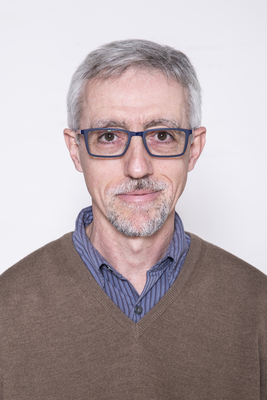Joan Rosell-Llompart

- ICREA Research Professor
- Director of DEW research laboratory
- Avda. Països Catalans, 26. 43007, Tarragona
- Office 215
- +34977558660
- joan.rosell(ELIMINAR)@urv.cat
- Research group web page
- Keywords / Research areas: aerosols; fluid mechanics; electrospray; electrospinning; electrohydrodynamics




Bio
He graduated in physics in 1987 from Universitat Autònoma de Barcelona. Before and during his PhD (Yale University, 1994), he worked with Prof. Juan Fernández de la Mora on aerodynamic focusing, inertial impaction, electrospray atomization, and differential mobility analysis. As postdoc associate with Prof. John B. Fenn (2002 Nobel laureate in Chemistry) at Virginia Commonwealth University, he did research on electrospray ionization mass spectrometry. In 1996 he joined Aradigm Corporation (California, USA) to develop liquid micro-jet technology for inhalation drug delivery, where he co-discovered with Prof. A. Gañán-Calvo (Universidad de Sevilla, Spain) the "flow blurring" fine liquid atomization regime. Since joining Universitat Rovira i Virgili in 2004 as ICREA Research Professor, his research has focused on electrospray and electrospinning fundamentals and their use for the manufacturing of nanomaterials. He leads the Droplets, intErfaces, and floWs (DEW) research lab at URV.
Research Interests
My research focuses on the use of fluid mechanics for transforming liquid structures to solid ones (e.g., droplets to particles) and on their assembly to make nanomaterials for niche applications in catalysis, drug delivery, tissue engineering, and energy harvesting. Central to our work is the use of electrostatic charging to deform the liquid-gas interface until it ejects a tiny jet of the desired dimension. By experiment and computer modeling, we aim to (i) understand the precise mechanisms underlying the processes involved, (ii) devise new microfluidic strategies to create functional structures (e.g., ‘smart’ particles for nanobiomedicine), (iii) characterize the properties of such structures, (iv) engineer ways to assemble them into larger functional supra-structures, e.g. high resolution 3D printing for assembling nanofibers into scaffolds for growing cells and tissues, and (v) develop strategies to demonstrate how these processes could be scaled up industrially.
